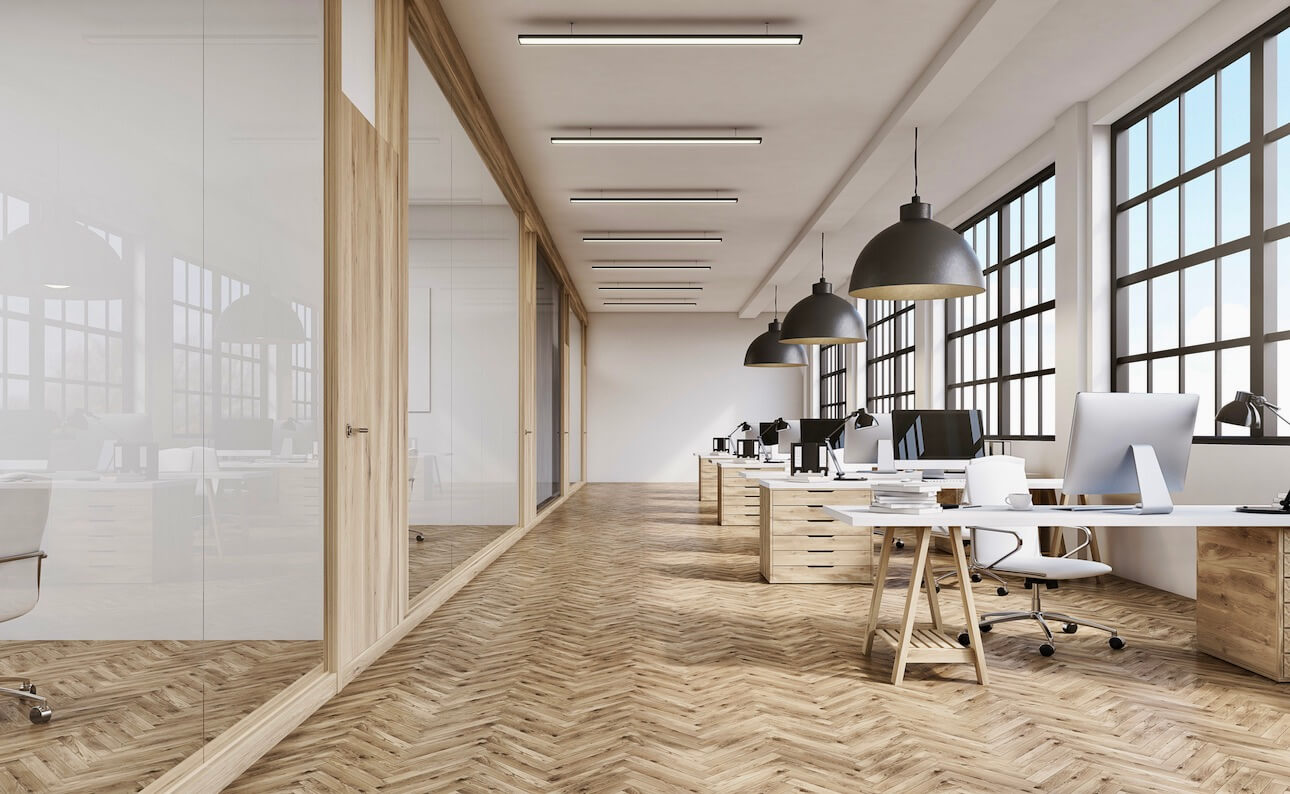
How to use flexible office space in your hybrid workplace
Flexible office spaces are on the rise. According to one study, 69% of large companies said that flexible office space would be the most in-demand amenity in the coming years. And it’s no wonder because these offices provide better ways to collaborate, improve the employee experience, help reduce real estate and utility costs, and allow teams to adjust workspaces to their needs.
So how do flexible offices differ from traditional ones? And how can hybrid workforces start using a flexible office to adapt to the future of work? Let’s take a look.
What is a flexible office space?
“Flexible office space” can mean a few different things. Flexible office spaces often refer to fully-serviced work amenities and workspaces that individuals or groups can lease on flexible terms. You may have also heard them called shared office space, flexi-space, serviced space, or flexi-leases.
Flexible office space can also refer to a type of office design that encourages changeability and agility. These spaces use many different types of workstations and modern design principles to create a more active, collaborative working environment.
How to maximize a flexible office space in your hybrid offices
As more companies adopt a hybrid work arrangement, workplace leaders turn towards flexible office spaces. These adaptable, agile spaces can help businesses save money, better utilise space, and tailor their workspaces to how their people work best.
So how do you maximize a flexible office space for hybrid working? Here are a few things you should do to get the most out of a flexible workplace experience.
1) Start with an open-plan design
A blank canvas can be pretty liberating when you want to design something you can call your own. It’s no different when you try to envision the workplace experience you want to give your team. You want a design built for the hybrid work experience with productivity and collaboration in mind.
The best way to start is with an open-plan design. This lets you change things around more efficiently and create a space that will fit you and your team. Consider how many team members you want and what activities you’ll need to accommodate.
Are you going to have lots of big meetings? Is everyone going to work and chat, or will they need some private spaces for head-down work? Your answers to these questions will guide the beginnings of your open-plan design.
2) Implement activity-based working
Activity-based working (ABW) allows teams to choose the settings that will best support the things they do in the workplace. ABW aims to increase productivity by giving people the kind of space that optimizes their work.
If you’re renting flexible office space, you can request different amenities, furniture, design features, lighting, utilities, and more that will help give your team everything they need to get more done.
Consider setting up different zones that let people move around to different types of workspaces throughout the day based on what they’re working on at any given time.
3) Use adaptable workstations
Workstations are the heart of any office, and in flexible office spaces, workstations need to be adaptable.
Create adaptable workstations with features like standing desks, ergonomic chairs, and more. These furnishings will help give your team the chance to change things up.
Also, consider using tables or desks that can be easily reconfigured to help create impromptu meeting spaces, break apart for more focused work, or stored away altogether.
4) Create a central hub
Even though we want to create flexible spaces, we still need to ensure employees have a central hub where they can get everything they need. Ideally, your flexible office space will have somewhere to get office supplies, coffee, and snacks. People also need space to store their belongings if you’re not implementing assigned desks.
To really embrace flexibility, make your central hub a multipurpose space where small groups can gather for informal meetings.
5) Focus on ease of access
Making your flexible office space accessible happens on several levels. You’ll want to choose a location that’s easy for people to commute to. Don’t forget to consider nearby transit links or how much parking you’ll need for your staff. This is an excellent opportunity to poll your people and learn how they like to travel to work.
Then you need to consider ease of access inside the office. Make sure you have wide, clear pathways between workstations, lots of space for high-traffic areas like kitchens, and elevators that can accommodate enough people, so they don’t slow down traffic flow.
While these things might seem small, if they’re not quite right, they can drag down the workplace experience. Getting the office flow right from the start will help encourage people to spend more time in the office and keep people more productive.
6) Use technology for space management
Technology makes things easier for remote and hybrid workers, and the same is true for managing flexible spaces. Powerful workplace management software solutions can help you manage workstation availability, meeting room bookings, and more.
Using desk booking software can help employees reserve different types of workstations throughout the day and help them plan their working patterns. And if you’re trying hot-desking in your flexible office space, letting workers pre-book desks can help cut down on any chaos.
The best technology will give you lots of usage statistics and analytics to analyze. Using this real usage data helps you adapt your workspaces as needed based on how they’re actually used. And space utilization analytics can help you reconfigure where different workstations and meeting areas are in your flexible space, helping you improve access if you find people aren’t using certain areas.
Finding technology that integrates seamlessly with the tools you already use can help make managing your flexible workspaces much more efficient. Look for a workplace management platform that integrates with your email, messaging, and calendar software so workers can easily book workstations and meeting rooms while keeping coworkers informed with notifications and invites along the way.
Make the most of your flexible office space with Smartway2

Now that you know what to include in your flexible office space make sure you’re using the right tools to support flexible working. Smartway2 by HubStar is a fully featured workplace scheduling solution that can help you manage desk and room bookings, stay updated on workplace usage statistics, and much more.


